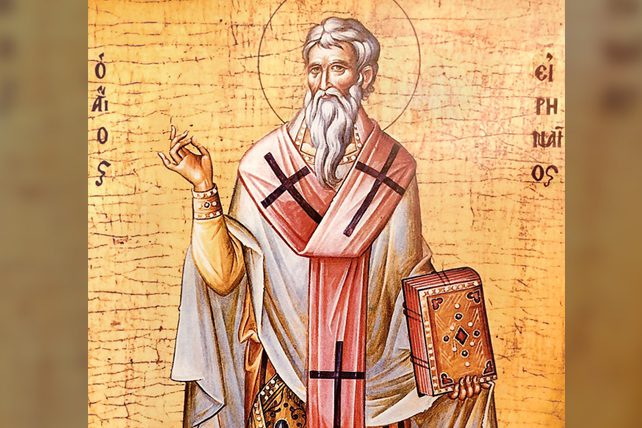 Gnosticism, is an ancient religious and philosophical movement, that emerged in the early centuries of the Christian era, blending various spiritual, mystical, and philosophical ideas. Its roots lie in diverse influences from Greek philosophy, Eastern spirituality, and Jewish thought, creating a worldview that emphasized hidden knowledge (gnosis) as the key to salvation. Gnostics believed that this hidden knowledge could reveal the true nature of the world—a material realm they often considered flawed or even evil—and the path to escape it. In contrast, they viewed the spiritual realm as pure and transcendent, often depicting the physical world as a prison for the soul.
Gnosticism, is an ancient religious and philosophical movement, that emerged in the early centuries of the Christian era, blending various spiritual, mystical, and philosophical ideas. Its roots lie in diverse influences from Greek philosophy, Eastern spirituality, and Jewish thought, creating a worldview that emphasized hidden knowledge (gnosis) as the key to salvation. Gnostics believed that this hidden knowledge could reveal the true nature of the world—a material realm they often considered flawed or even evil—and the path to escape it. In contrast, they viewed the spiritual realm as pure and transcendent, often depicting the physical world as a prison for the soul.
What Is Gnosticism?
In the early Christian church, Gnosticism posed a significant theological challenge. Many Gnostic ideas conflicted with the foundational teachings of Christianity, particularly the belief in the goodness of creation, the incarnation of Jesus, and the bodily resurrection. Gnostics tended to dismiss the material world as irredeemable, which contradicted the Christian doctrine that God created the world as “good” and that Jesus’ physical incarnation and resurrection were central to humanity’s redemption. This rejection of the material world often led Gnostics to downplay or reject key Christian teachings about Jesus’ humanity and his role as savior.
Why Gnosticism Matters for Christians
Early church leaders, including Irenaeus, Tertullian, and Athanasius, took up the fight against Gnosticism to protect Christian orthodoxy. They wrote extensively to clarify Christian doctrine and refute Gnostic teachings, emphasizing that salvation was available to all, not just those with “secret knowledge.” These leaders defended the goodness of creation, the value of the physical world, and the importance of the incarnation as fundamental Christian beliefs. Their efforts helped establish key tenets of Christian faith, such as the affirmation that the physical and spiritual aspects of life are interconnected and that redemption encompasses both.
Gnosticism and the Bible
Several New Testament passages address the early forms of Gnosticism that were emerging during the time the New Testament was written.
John 1:14 – “The Word became flesh and made his dwelling among us. We have seen his glory, the glory of the one and only Son, who came from the Father, full of grace and truth.”
This verse emphasizes the incarnation of Jesus as fully human, countering the Gnostic idea that the material world and the body are inherently evil.
Colossians 2:8-10 – “See to it that no one takes you captive through hollow and deceptive philosophy, which depends on human tradition and the elemental spiritual forces of this world rather than on Christ. For in Christ all the fullness of the Deity lives in bodily form, and in Christ you have been brought to fullness.”
Paul warns against deceptive philosophies and affirms the full deity of Christ in bodily form, directly challenging the Gnostic separation of spirit and matter.
1 John 4:2-3 – “This is how you can recognize the Spirit of God: Every spirit that acknowledges that Jesus Christ has come in the flesh is from God, but every spirit that does not acknowledge Jesus is not from God. This is the spirit of the antichrist, which you have heard is coming and even now is already in the world.”
The affirmation of Christ’s incarnation is a direct challenge to Gnostic views that denied Jesus’ humanity.
1 Timothy 6:20-21 – “Timothy, guard what has been entrusted to your care. Turn away from godless chatter and the opposing ideas of what is falsely called knowledge, which some have professed and in so doing have departed from the faith.”
Paul warns Timothy about a “false knowledge,” often interpreted as a reference to Gnostic “hidden knowledge” (gnosis).
1 Corinthians 15:20-22 – “But Christ has indeed been raised from the dead, the firstfruits of those who have fallen asleep. For since death came through a man, the resurrection of the dead comes also through a man.”
Paul’s emphasis on the bodily resurrection counters the Gnostic rejection of the physical body as part of God’s redemptive plan.
Colossians 1:15-16 – “The Son is the image of the invisible God, the firstborn over all creation. For in him all things were created: things in heaven and on earth, visible and invisible, whether thrones or powers or rulers or authorities; all things have been created through him and for him.”
This passage supports the idea that creation is inherently good and affirms the divinity of Jesus, challenging Gnostic views that saw the material world as corrupt and separate from the divine.

